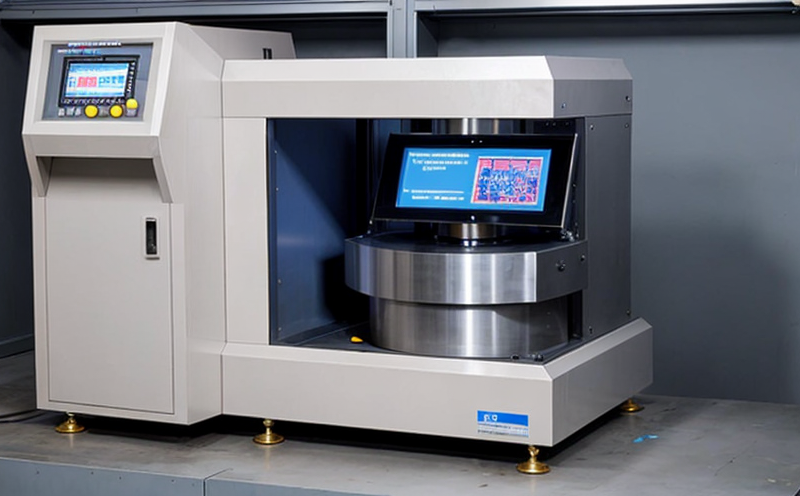ISO 18391 3D Metrology Data Interoperability Testing
The ISO 18391 standard is a critical component in ensuring the interoperability of data within additive manufacturing (AM) and three-dimensional printing processes. This service focuses on testing whether different software systems used across the supply chain can accurately exchange and process metrological data, thereby facilitating seamless integration between various stages of AM production.
Understanding this context is crucial for quality managers, compliance officers, R&D engineers, and procurement professionals who are responsible for ensuring that their processes meet international standards. This service ensures that additive manufacturing parts are produced to exact specifications, aligning with the requirements set forth by ISO 18391.
The primary purpose of this testing is to verify that all involved systems—ranging from CAD software used in design phases to CAM tools employed during slicing and finally the actual AM machines—are capable of exchanging accurate metrological data. This interoperability ensures that there are no discrepancies between the original design intent and the final manufactured part, which can significantly impact the overall quality and reliability of additive manufacturing processes.
Compliance with ISO 18391 is essential for manufacturers seeking to ensure their products meet international standards for dimensional accuracy. By testing data interoperability according to this standard, companies can demonstrate their commitment to high-quality production practices and enhance trust among clients and stakeholders.
To achieve compliance with ISO 18391, it's important to understand the key elements involved in this process:
- Data exchange protocols
- Format compatibility between different software systems
- Metrological accuracy during data transfer
- Consistency of dimensional measurements across various stages of production
The testing involves a series of steps to ensure that each element works seamlessly with others, contributing to the overall integrity and consistency of additive manufacturing processes. This includes evaluating whether CAD files can be accurately translated into machine-readable formats suitable for AM machines.
For R&D engineers involved in developing new AM technologies or improving existing ones, ensuring interoperability is vital. It allows them to test various configurations without worrying about compatibility issues, thus accelerating innovation cycles and bringing products to market faster.
In the realm of procurement, this service helps ensure that suppliers meet high standards before integrating them into supply chains. By verifying data interoperability early in the process, organizations can avoid costly mistakes later down the line, ensuring smoother operations throughout their AM ecosystem.
Understanding how ISO 18391 impacts various stakeholders provides valuable insights into why this service is important for maintaining consistent quality across additive manufacturing processes. Compliance with these standards not only enhances product reliability but also fosters trust among all parties involved in the supply chain.
Scope and Methodology
| Aspect | Description |
|---|---|
| Data Exchange Protocols | Evaluating the effectiveness of standard protocols like STEP and IGES in facilitating data exchange between different software systems. |
| Format Compatibility | Checking if all involved systems can read and write files adhering to ISO 18391 specifications accurately. |
| Metrological Accuracy | Verifying that dimensional measurements remain consistent throughout the production process, from design through manufacturing. |
| Slice Quality Consistency | Evaluating whether slicing software maintains slice quality consistency across various CAD models and file formats. |
The testing methodology follows a structured approach designed to meet the requirements of ISO 18391. This involves several steps, including:
- Selection of representative samples for testing.
- Preparation of samples according to specified guidelines provided by ISO 18391.
- Conducting initial metrological checks on the prepared samples using appropriate tools and techniques.
- Data exchange between different software systems involved in AM processes, ensuring compatibility.
- Evaluation of metrological accuracy during data transfer and slicing process.
- Final metrological verification after manufacturing to ensure consistent dimensions with original CAD models.
This comprehensive approach ensures that all aspects contributing to dimensional accuracy are thoroughly examined under controlled conditions. It allows us to identify any discrepancies early in the production process, providing valuable feedback for improvements where necessary.
Benefits
- Achieves ISO 18391 Compliance: Ensures full compliance with international standards, enhancing credibility and trustworthiness.
- Enhanced Data Interoperability: Facilitates seamless communication between different software systems involved in AM processes.
- Increased Production Efficiency: Reduces errors related to data exchange and ensures consistent slice quality across all stages of production.
- Better Quality Control: Provides early detection of potential issues, allowing for corrective actions before they become costly problems.
- Improved Product Reliability: Ensures that additive manufactured parts meet exact specifications, leading to higher confidence in end-product quality.
- Facilitates Innovation: By ensuring interoperability, this service supports the development of new and improved AM technologies without encountering compatibility issues.
Incorporating ISO 18391 into your additive manufacturing processes not only enhances compliance but also contributes significantly to operational efficiency and product quality. This ultimately leads to greater customer satisfaction and long-term business success.
Quality and Reliability Assurance
The implementation of ISO 18391 in additive manufacturing processes is essential for maintaining high levels of quality and reliability. By ensuring that all data exchanged between different stages of production adheres to this standard, organizations can minimize errors and inconsistencies that could otherwise arise from incompatible or poorly integrated systems.
Quality assurance plays a crucial role in identifying any deviations early on so corrective actions can be taken promptly. This proactive approach helps prevent costly rework later in the process, saving time and resources while improving overall productivity.
Reliability is another key factor when it comes to additive manufacturing. With stringent testing protocols based on ISO 18391, manufacturers can guarantee that their products meet or exceed specified standards for dimensional accuracy. This builds confidence among customers and partners by demonstrating a commitment to excellence in every aspect of the production process.
Furthermore, adherence to this standard promotes best practices within the industry, encouraging continuous improvement through shared knowledge and experience. As additive manufacturing continues to evolve rapidly, maintaining strict adherence to international standards like ISO 18391 ensures that organizations remain competitive while delivering superior outcomes consistently.





